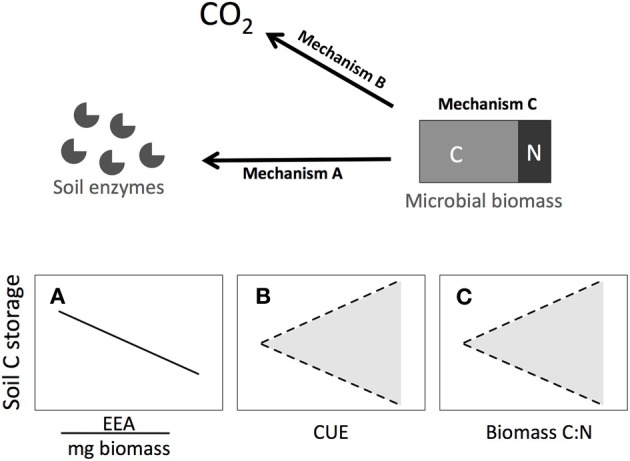Figure 1.

Three mechanisms through which microorganisms can shift C allocation: (A) extracellular enzyme activities, (B) carbon use efficiency, or (C) biomass stoichiometry. Each of these pathways can alter C storage in soils. Trend lines indicate expected responses when each mechanism is operating in isolation. In (A), increased C allocation to extracellular enzymes can decrease soil C storage by enhancing C cycling rates. Shading in (B and C) shows uncertainty owing to expected interactions between the total microbial biomass pool, CUE, biomass C:N and enzyme production. Increased CUE or biomass C:N can augment soil C storage by increasing the amount of C retained in the soil microbial biomass. Alternatively, increased C in microbial biomass may cause microbes to produce more enzymes per unit biomass to acquire limiting organic nutrients, ultimately decreasing soil C stocks.
